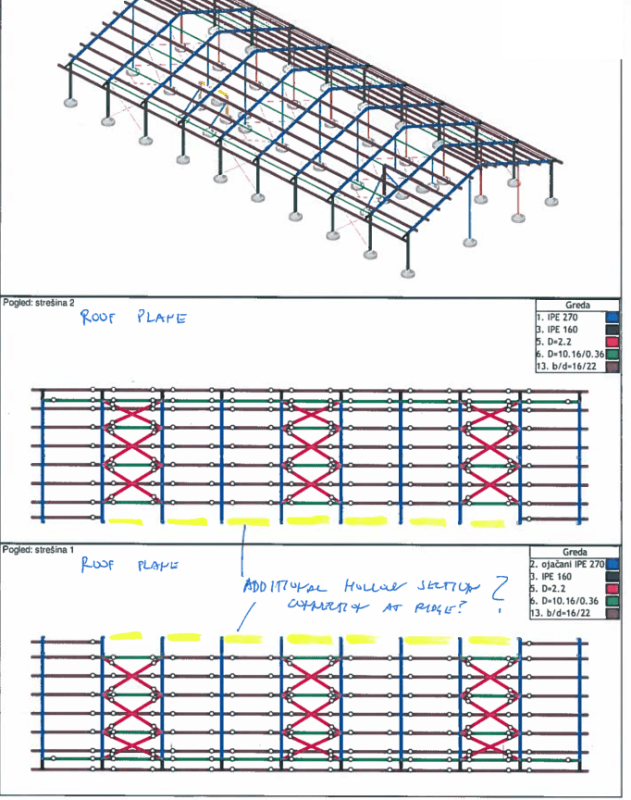greznik91
Structural
- Feb 14, 2017
- 186
I apologize for poor English.
QUESTION: Im wondering is it necessary to connect roof bracing at the top of a ridge - apex haunch?
I have seen some portals with bracing all the way to the top, and some that ends a bit lower.
I think when bracing is not connected all the way to the top that there is some bending moment (around minor axis) of a primary steel beam (IPE 270)in order to transfer forces...
I think there should be at least an additional hollow section connection at the ridge (yellow in image). What do you think about this?




QUESTION: Im wondering is it necessary to connect roof bracing at the top of a ridge - apex haunch?
I have seen some portals with bracing all the way to the top, and some that ends a bit lower.
I think when bracing is not connected all the way to the top that there is some bending moment (around minor axis) of a primary steel beam (IPE 270)in order to transfer forces...
I think there should be at least an additional hollow section connection at the ridge (yellow in image). What do you think about this?




